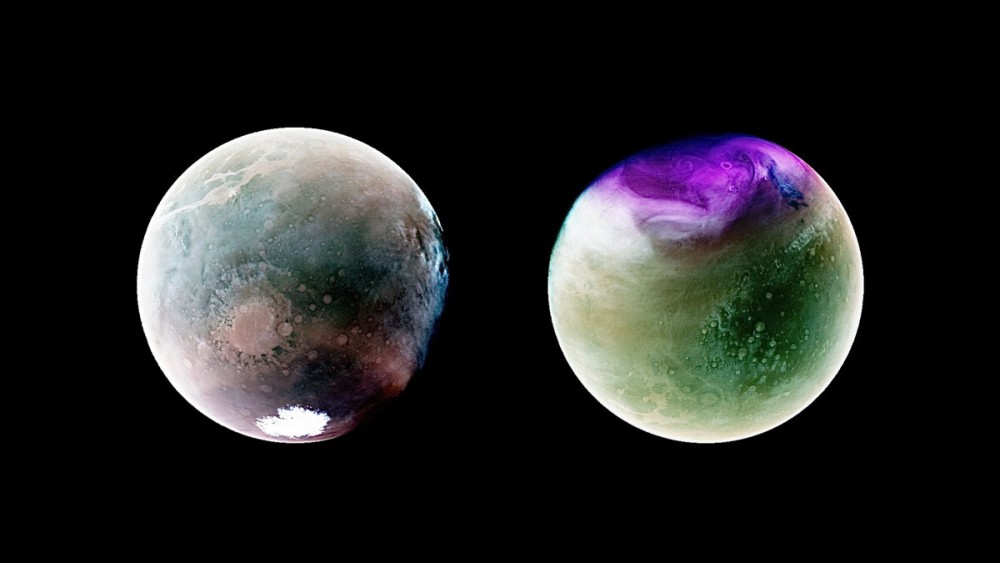
IANS
NASA's MAVEN (Mars Atmosphere and Volatile EvolutioN) mission has acquired stunning views of Mars in two ultraviolet images taken at different points along the Red Planet's orbit around the Sun.
By viewing the planet in ultraviolet wavelengths, scientists can gain insight into the Martian atmosphere and view surface features in remarkable ways.
The images were taken using MAVEN's Imaging Ultraviolet Spectrograph (IUVS) instrument in 2022 and 2023 when the planet was near opposite ends of its elliptical orbit.
The IUVS instrument measures wavelengths between 110 and 340 nanometres, outside the visible spectrum.
To make these wavelengths visible to the human eye and easier to interpret, the images are rendered in false colour, with the varying brightness levels of three ultraviolet wavelength ranges represented as red, green, and blue.
In this colour scheme, atmospheric ozone appears purple, while clouds and hazes appear white or blue.
The surface can appear tan or green, depending on how the images have been optimised to increase contrast and show detail.
The first image was taken in July 2022 during the southern hemisphere's summer season, which occurs when Mars passes closet to the Sun.
The summer season is caused by the tilt of the planet's rotational axis, similar to seasons on Earth.
Argyre Basin, one of Mars' deepest craters, appears in the image filled with atmospheric haze, while the deep canyons of Valles Marineris appear with clouds.
The southern polar ice cap is also visible, shrinking from the relative warmth of summer.
The second image is of Mars' northern hemisphere and was taken in January 2023 after Mars had passed the farthest point in its orbit from the Sun.
The rapidly changing seasons in the north polar region cause an abundance of white clouds.
The image shows deep canyons of Valles Marineris as well as many craters.
MAVEN launched in November 2013 and entered Mars' orbit in September 2014.
The mission's goal is to explore the planet's upper atmosphere, ionosphere, and interactions with the Sun and solar wind to explore the loss of the Martian atmosphere to space.
Understanding atmospheric loss gives scientists insight into the history of Mars' atmosphere and climate, liquid water, and planetary habitability.






